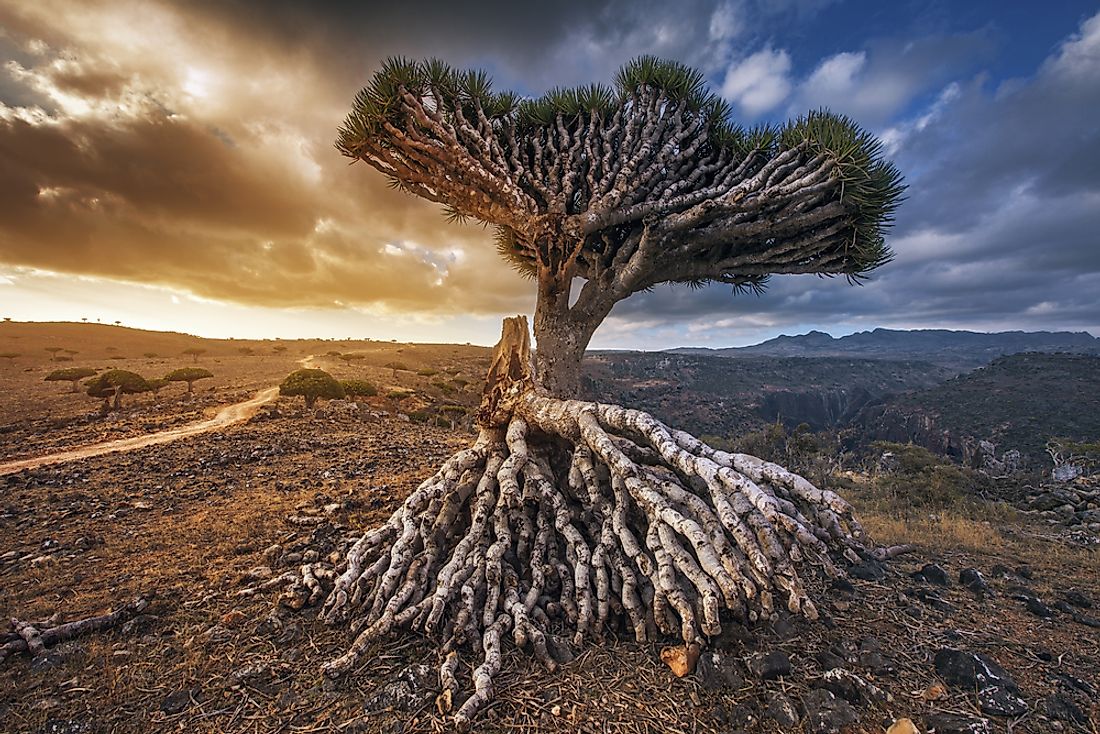Where Is Socotra Located?

Socotra, also known as Soqotra, is an archipelago comprising of four islands found in the Arabian Sea, with Socotra being the largest island. Socotra is also a part the Aden Governorate and part of it is in Yemen. The archipelago was joined to Hadhramaut Governorate in 2004 since it is nearer to the island compared to Aden and in 2013, it became a governorate changing its name to the Socotra Governorate.
Unique Flora and Fauna
Socotra is known as the Arian Sea’s jewel of biodiversity. A group of biologists from the UN carried out a survey of the region's fauna and flora in the 1990s. Their research counted up to about 700 endemic species that are exclusive to the region and not found anywhere else in the whole world. Only other locations in the world with a similarly high number of biodiversity include Hawaii, the Galapagos Islands, New Zealand, and New Caledonia. Due to the prolonged geographical isolation combined with drought and extreme heat, which have created a unique and beautiful endemic flora. The Centre for Middle Eastern Plants which is a part of the Royal Botanical Garden Edinburgh carried out a botanical field research, which indicated that 825 plant species out of which 307 are endemic in, and not found anywhere else in the world. The IUCN Red List has assessed the entire flora found in the Socotra Archipelago, where species listed as Critically Endangered include three plants while another 27 plants are on the endangered plant species list.
Flora
Amongst the most spectacular plants in Socotra include the dragon's blood tree (Dracaena cinnabari) a peculiar looking umbrella-shaped tree, with red sap that resembles the blood of the dragon of the ancient legend, which was sought after as a dye at the time and presently used as varnish. During ancient times, the various endemic aloes species in Socotra were of great importance and were used for medicine and for cosmetic purposes. Other plants which are endemic in Socotra include the giant succulent tree, Aloe perryi, the rare Socotran pomegranate, cucumber tree, and Boswellia socotrana.
Fauna
The archipelago is also inhabited by a rich fauna which includes some endemic species of birds like the Socotra Cisticola, the Socotra Starling, the Socotra sparrow, the Socotra golden, the Socotra warbler among others. Majority of birds in Socotra are endangered with the major threat being non-indigenous feral cats that feed on them. The archipelago also features one mammal that is endemic, six endemic species of birds. There are no amphibians in the archipelago, but the reptiles make up the most important of the Socotran vertebrate animal species with a total 31 species. Aside from the most recent two species that have been introduced namely, Hemidactylus robustus and the Hemidactylus flaviviridis, the rest of the native species are endemic. Socotra also comprises of many endemic invertebrates including three freshwater crab species, two Socotrapotamon, and several spiders. As is common among isolated islands, bats are also native to the archipelago.
Threats
Over a period of 2,000 years of human settlement on the archipelago, the environment has been gradually altered. The plants and animals found constitute of a small portion of what existed several years ago. It is thought that the island now has a tiny fraction of the animals and plants that once occupied the island. Besides, the island was home to large lizards and crocodiles, which have since disappeared. A few centuries ago the island was filled with rivers and wetlands and huge stocks of endemic trees and large pastures. The water buffaloes were present during the early 17th century, but currently, Socotra is full of sand gullies, and the native plants can only survive if the region is moist or if they are protected from livestock. The rest of the fauna is under great threat because of goats and other species introduced.







